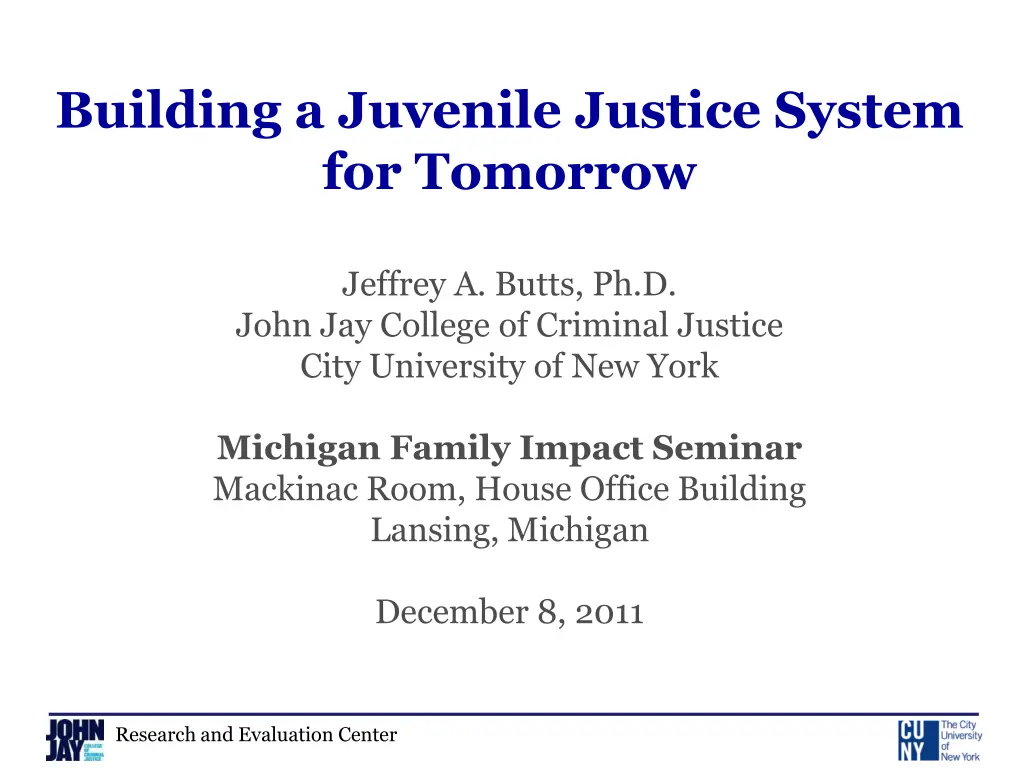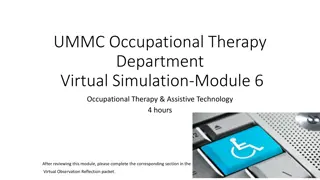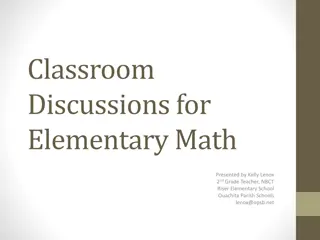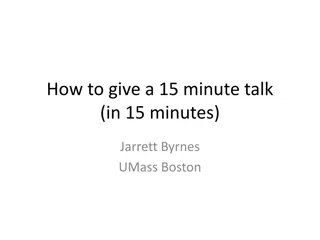
Strategies for Transforming the Juvenile Justice System
Explore innovative strategies for reshaping the juvenile justice system including resolution, reinvestment, and realignment. Learn why focusing on systemic change is crucial in improving outcomes for youth offenders.
Download Presentation

Please find below an Image/Link to download the presentation.
The content on the website is provided AS IS for your information and personal use only. It may not be sold, licensed, or shared on other websites without obtaining consent from the author. If you encounter any issues during the download, it is possible that the publisher has removed the file from their server.
You are allowed to download the files provided on this website for personal or commercial use, subject to the condition that they are used lawfully. All files are the property of their respective owners.
The content on the website is provided AS IS for your information and personal use only. It may not be sold, licensed, or shared on other websites without obtaining consent from the author.
E N D
Presentation Transcript
Building a Juvenile Justice System for Tomorrow Jeffrey A. Butts, Ph.D. John Jay College of Criminal Justice City University of New York Michigan Family Impact Seminar Mackinac Room, House Office Building Lansing, Michigan December 8, 2011 Research and Evaluation Center
Resolution, Reinvestment, and Realignment: Three Strategies for Changing Juvenile Justice September 2011 Jeffrey A. Butts and Douglas N. Evans Research and Evaluation Center, John Jay College of Criminal Justice, City University of New York Research and Evaluation Center
The Research Consensus Incarceration: Not an effective method of behavior change Potentially toxic environment for youth and staff Limited impact on public safety The most expensive option for young offenders Can easily capture the policy agenda Research and Evaluation Center
How Can we Change Juvenile Justice From: To: A focus on large institutions A full menu of options Mostly public funding Mixed funding with extensive private partners System based on supervision and control alone System based on behavioral interventions and supports Placing youth in centralized service locations Placing services near youth and families State funding concentrated in a few secure facilities State funding spread across full menu of options, used as incentive for innovation and local responsibility Research and Evaluation Center
Three Basic Strategies or Levers for Change Resolution Direct managerial influence over system behavior. Reinvestment Financial incentives to change system behavior. Realignment Organizational and structural modifications to alter system behavior. Research and Evaluation Center
Why Focus on Changing Systems Now? Research and Evaluation Center
Placement Populations are Falling Research and Evaluation Center
Placement Populations are Falling Research and Evaluation Center
Why Did we Use Corrections so Much Before? 1) Incapacitation Even if research shows that incarceration does not reduce crime overall, we want the kid off the streets. 2) Retribution 3) Convenience Economies of scale: food service, education, transportation, medical costs, etc. Secure confinement demonstrates our disapproval of illegal behavior, whether or not it changes that behavior. 4) Isomorphism Organizations within the same sector tend to resemble one another over time. It s safer to adopt structures and practices already used in other jurisdictions. Research and Evaluation Center
Key Question for Policy and Practice: What strategies are likely to be effective now, but also sustainable under different economic conditions and a different crime environment? Research and Evaluation Center
Changing Juvenile Justice Reinvestment Initiatives: Resolution Initiatives: Pennsylvania Act 148 (1976) Massachusetts (1970s) Wisconsin Youth Aids (1981) Utah (1980s) Reclaim Ohio (1993) Missouri (1990s) Deschutes county, Oregon( 1997) North Carolina (1998) Realignment Initiatives: Redeploy Illinois (2004) Wayne County (MI) (2000) California Senate Bill 681 (2007) California Senate Bill 81 (2007) Texas Commitment Reduction Program (2009) Research and Evaluation Center
Changing Juvenile Justice Reinvestment Initiatives: Resolution Initiatives: Pennsylvania Act 148 (1976) Massachusetts (1970s) Wisconsin Youth Aids (1981) Utah (1980s) Reclaim Ohio (1993) Missouri (1990s) Deschutes county, Oregon( 1997) North Carolina (1998) Realignment Initiatives: Redeploy Illinois (2004) Wayne County (MI) (2000) California Senate Bill 681 (2007) California Senate Bill 81 (2007) Texas Commitment Reduction Program (2009) Research and Evaluation Center
Policy Issues Geographic Equity Large and small jurisdictions have different interests. Regional or hybrid systems may be necessary. Demand Shift Restricting access to juvenile incarceration could increase demand for adult incarceration. Medicalization If funding requires youth disorders to be present, justice systems chase the dollars, perhaps increasing stigma and disproportionate minority contact. Research and Evaluation Center
Jeffrey A. Butts, Ph.D. John Jay College of Criminal Justice City University of New York jbutts@jjay.cuny.edu www.jjay.cuny.edu/rec www.jeffreybutts.net Research and Evaluation Center






















